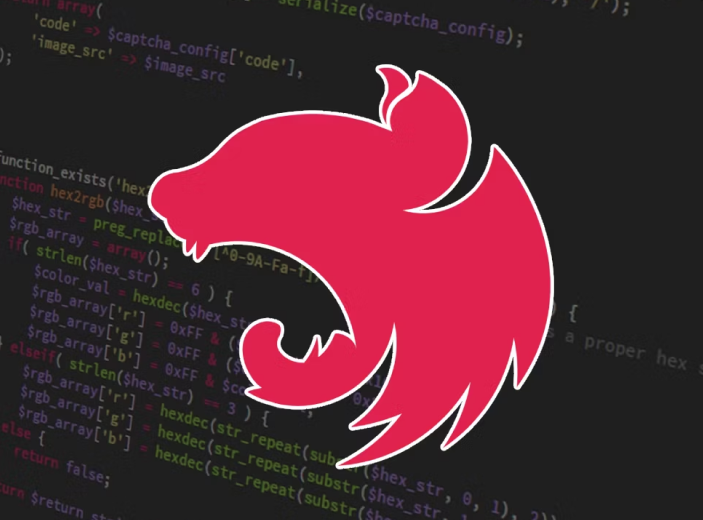Share this article
You are facing a new backend project, but at this moment, you don’t know which technology would be suitable to start this new challenge? In the world of development, there are many frameworks that can help you, but sometimes it’s hard to choose the right one… Well, you’ve come to the right place if you’ve been thinking about the advantages of NestJS for your development.
NestJS is a powerful framework that is revolutionizing web development and helps you create scalable and testable backend applications.
In this post, we will see what NestJS is, its features, the design pattern it uses, what you can achieve with it, and the updates it is having in 2023.
Keep reading and find out everything. 👇
What is NestJS?
NestJS is a Node.js web development framework compatible with JavaScript, based on TypeScript, for building backend applications. It provides a structure where robust, scalable, and reliable apps can be created.
It is inspired by other frameworks such as Spring and Angular, making it suitable for developing backend apps and traditional websites.
NestJS features authentication systems and database management capabilities.
It contains integrations that can be used across different third-party modules and support additional features. Moreover, it includes functions that facilitate integration with testing and debugging tools to ensure correct code functionality.

Its active community, adaptability, and scalability make it one of the best options for programming.
What are the characteristics of Nest.js?
Among the features of this framework are:
- • Flexible and modular architecture: Allows breaking down application components into small modules, enhancing scalability and maintenance without compromising usability.
- • Database support: Supports both relational and non-relational databases, including Redis, PostgreSQL, MongoDB, and MySQL.
- • Integration with messaging systems: Allows asynchronous communication with applications like Kafka, RabbitMQ, Redis, AWS SQS (Simple Queue Service), etc.
- • Microservices support: Enables the creation of small applications that can be independently scaled.
- • Structured routing: Uses the built-in router provided by the framework to assign controllers, ensuring they handle requests for specific routes.
- • Decorators: Define services, controllers, routes, and other elements, promoting clean and readable code.
- • Middlewares: Used to process HTTP requests before they reach the controllers.
- • Ease of integration with tools and libraries: Utilizes TypeORM for database access, Passport for authentication, and more.
- • Active community: NestJS has an active developer community that collaborates with learning resources, extensions, and modules.
What design pattern does NestJS use?
NestJS employs various design patterns, including:
- Dependency Injection: This pattern manages dependencies and object instantiation efficiently and decoupled within an application.
It helps keep application dependencies isolated and facilitates testing.
- Object-Oriented Programming: Since it is written in TypeScript, it encourages developers to write modular and readable code.
- Hexagonal Architecture: This architecture separates business logic from infrastructure. By doing so, applications are not tied to a single technology, making them more scalable and easier to maintain.
What can be done with NestJS?
NestJS can be used to build:
• Scalable and maintainable web applications.
- • GraphQL-based APIs: Leveraging integration with libraries like Apollo Server.
- • RESTful API development: Where you can define controllers, routes, and handle HTTP requests.
- • Microservices: Allows creating independent and scalable services that communicate with each other.
- • Real-time apps: Such as chat and online games.
- • Databases: You can connect to SQL or NoSQL databases using specific modules.
- • Enterprise apps: It is optimal for developing enterprise applications due to its modular architecture and robust security features.
Updates on NestJS in 2023
NestJS is a mature and stable framework with a wide range of features and functions. It is known for its ease of learning and use.
One notable feature is its syntax similarity to Node.js, making it easier for developers to transition between frameworks.
In 2023, NestJS has seen significant growth in:
- • Mobile app development: It continues to be an ideal choice for mobile app development.
- • Increased usage for microservices: Modules, containers, and dependency injection are providing more accessibility and ease in development.
- • Support for new languages like Python and Go.
- • Enhanced quality of information and documentation.
- Integration with other technologies like MongoDB, MySQL, and PostgreSQL.
New Development Tools
The official NestJS website showcases new development tools, including:
- • Interactive Code Playground: Helps determine if a node is request-scoped or transient and allows interaction with other members like providers and controllers, displaying real-time results.
- • Auditing: Devtools provide detailed audit reports, highlighting issues and improvement options.
- • CI/CD Integration: Track changes made and visualize differences between the new and previous versions.
- • Explore Your Graph: Efficient troubleshooting solution to identify dependencies and connections for internal class verification.
- Route Explorer: Offers a comprehensive understanding of your system’s routing, revealing guards, pipes, and interceptors linked to the route.
Conclusion
In conclusion, NestJS has emerged as an excellent tool that promotes good programming practices by offering modularity. It is used in both small and large organizations, resulting in high-quality projects.
Its active community, adaptability, and scalability make it one of the top choices for programming.
If you want to harness the potential of NestJS for your next project, Moveapps is ready to assist you. Let’s chat!
References:
https://desarrolloweb.com/home/nestjs
https://itequia.com/es/descubre-nestjs/
https://kinsta.com/es/base-de-conocimiento/nestjs/
https://anywhere.epam.com/es/blog/preguntas-entrevista-desarrollador-node-js-avanzadas















